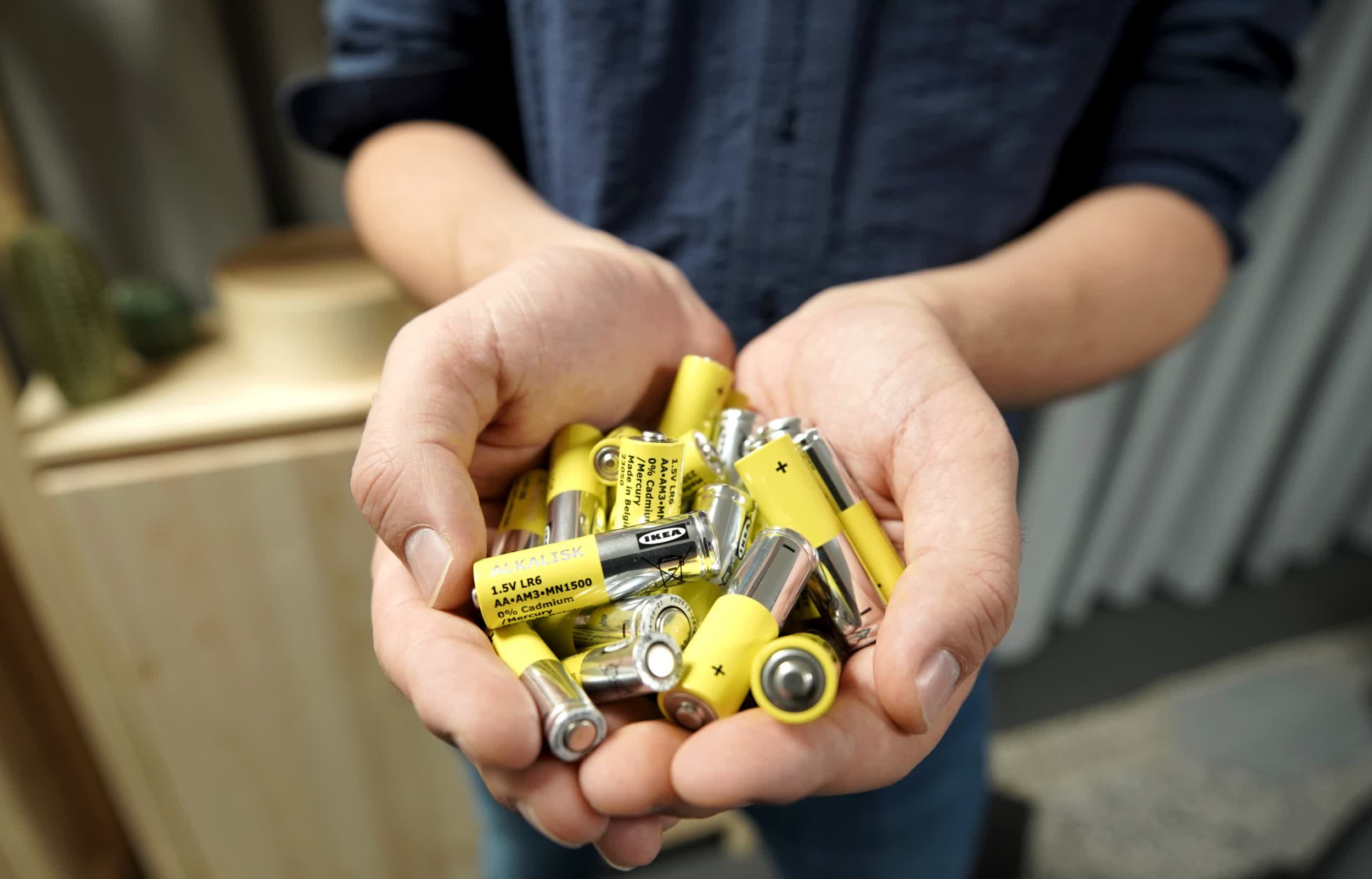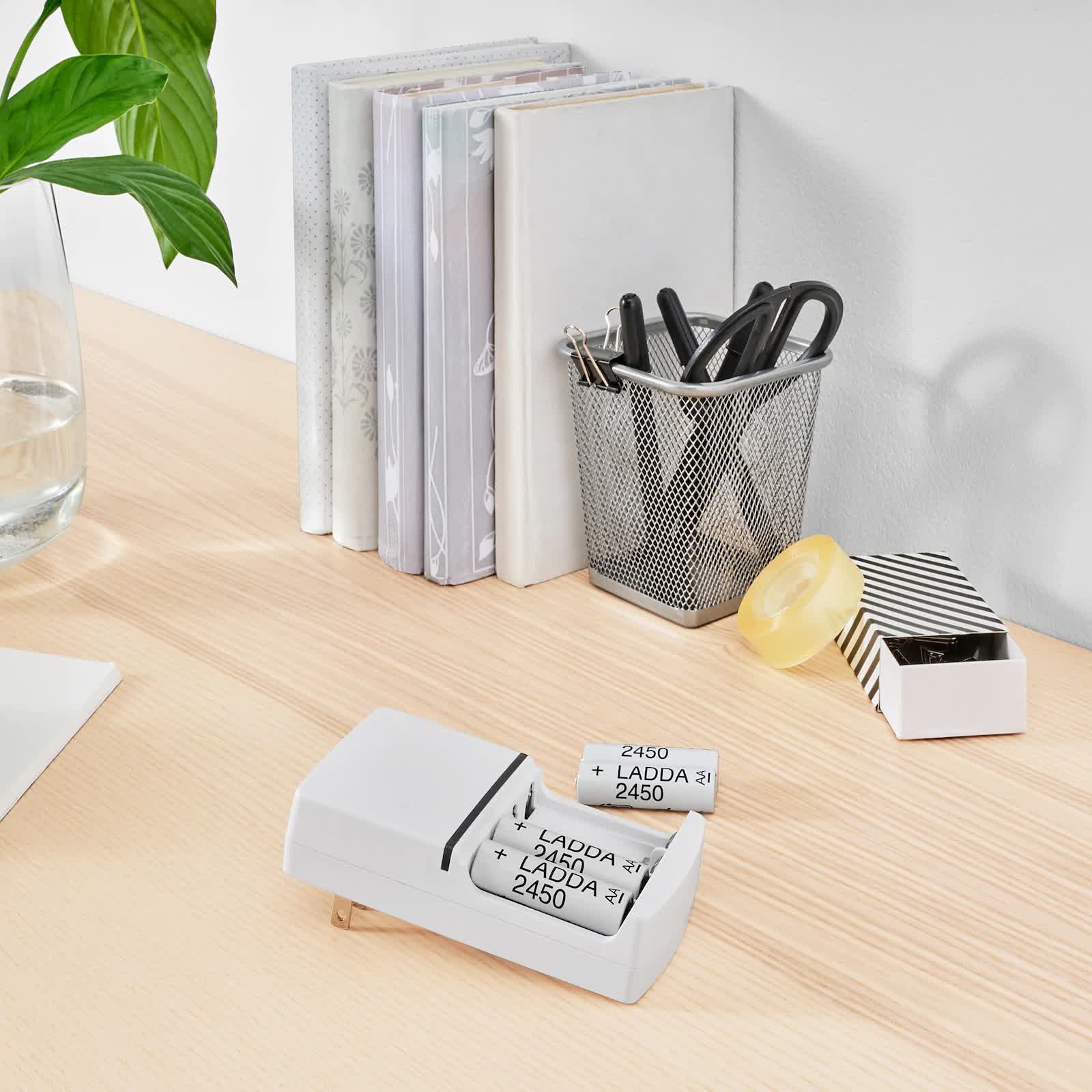The big picture: After just 10 charges of a rechargeable NiMH battery, greenhouse gas emissions are lower versus using alkaline batteries that give off the same amount of energy. Ikea said. Hypothetically, if all Ikea customers switched from alkaline batteries to rechargeables and used them for 50 cycles, global waste would drop by as much as 5,000 tons annually, we’re told.

Swedish furniture maker Ikea this week announced plans to discontinue distribution of all non-rechargeable alkaline batteries by October 2021.
Ikea sold around 300 million alkaline batteries last year under the Alkalisk name. By phasing out alkaline batteries and focusing on rechargeable nickel-metal hydride (NiMH) batteries, the company can offer customers “an affordable and convenient solution to prolong the life of products and materials, and reduce waste,” said Caroline Reid, sustainability development manager at Ikea.

Ikea sells its own line of rechargeable AA batteries. A pack of four AA Ladda batteries will set you back $6.99 while a four-slot charger commands for $8.99. According to Ikea, a single Ladda battery can be recharged up to 500 times.
Worth pointing out is the fact that Ikea’s button-style lithium-ion batteries will persist as some of the company’s products still rely on these types of batteries to function.
What is your stance on rechargeable NiMH batteries? I know people that swear by them and others that insist on a cheap pack of disposable alkalines every time.
